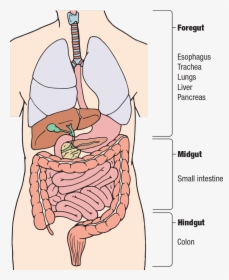Carcinoid Syndrome
Home » For Patients old » Living with NETs » Carcinoid Syndrome

What is carcinoid syndrome?
Carcinoid syndrome is a constellation, collection, or group of symptoms experienced by a subset of people who have a neuroendocrine tumor.
What are the signs and symptoms of carcinoid syndrome?
The signs and symptoms of carcinoid syndrome can be broad but the most common ones include:
- Flushing
- Diarrhea
Less common signs and symptoms of carcinoid syndrome include:
- Wheezing
- Abdominal pain
- Visible thread-like blood vessels (also called telangiectasias)
- Low blood pressure causing dizziness or feeling you may pass out (also called hypotension)
Symptom
Patient Frequency
Characteristics
Flushing
90%
Diarrhea
70-80%
Occurs at irregular intervals. Can be accompanied by abdominal cramping.1, 2, 3
Abdominal pain
35%
Pain in the abdomen that can be progressive. 1
Low blood pressure
30%
Low blood pressure (or hypotension) occurs when blood pressure is lower than 90/60 mm Hg. This can occur either on standing up suddenly, which is also referred to as orthostatic and it means parts of the body such as the brain and other areas do not get enough blood.
Visible thread-like blood vessels
25%
Collections of tiny blood vessels that appear close to the surface of the skin on the faces of people with NETs, which are a consequence of repeated severe flushing episodes.4 These thread-like blood vessels are also called telangiectasias and eventually become semi-/permanent.5
Wheezing
10 – 20%
A high-pitched whistling sound while breathing, which can be associated with difficulty breathing. Wheezing is due to constriction or tightening of the airways, which is also called “bronchoconstriction.” Wheezing may occur concurrently with flushing, sneezing, and difficulty breathing. .1, 2, 3, 4
People with carcinoid syndrome can experience complications. Read about possible complications associated with carcinoid syndrome.
What causes carcinoid syndrome?
Carcinoid syndrome is caused by the release or secretion of excessive amounts of bioactive substances (peptides and other hormones) from a neuroendocrine tumor (NET) into the bloodstream.1, 2 NETs that secrete such substances are considered to be functional NETs.1 The body’s normal neuroendocrine cells also produce these active substances but in the case of carcinoid syndrome, the neuroendocrine tumor cells produce abnormally high levels of the substances. Once secreted by the NET, these active substances enter the bloodstream, and if they are not metabolized/deactivated by the body, for instance, in the liver, they may produce the pattern of symptoms referred to as carcinoid syndrome.1, 2, 3
NETs can release a multitude of bioactive substances, many of which are largely unknown, that create symptoms. More commonly encountered chemical substances associated with carcinoid syndrome, include serotonin, tachykinins, histamine, kallikrein, and prostaglandins. 1, 2, 3 Serotonin appears to the primary substance associated with the so-called “midgut” carcinoid syndrome; however, the contribution of individual substances known to cause the condition is largely unknown.1
Carcinoid syndrome triggers
Certain activities, foods, and beverages can “trigger” carcinoid syndrome symptoms by altering blood flow through areas of the tumor. Examples include stress, exercise, and even moving one’s bowels can lead to symptoms of carcinoid syndrome.5
Consuming certain foods and beverages can also escalate or aggravate symptoms in different ways. 5 These foods and beverages may include:
- Alcohol, especially red wine
- Caffeinated beverages
- Chocolate
- Avocado
- Nuts
- Cheese
- Bananas
Learn more about eating right with neuroendocrine cancer.
Who develops carcinoid syndrome?
Carcinoid syndrome can develop when a neuroendocrine tumor produces sufficient quantities of substances that cause the symptoms associated with the condition.
NETs occur in about 7 out of every 100,000 people.6 Among those living with NETs, researchers estimate 19% develop carcinoid syndrome.6 NET tumors occur in both men and women, occurring slightly more frequently in women6, and the typical age (median age) of a person at NET diagnosis is between 55 and 60.1
 NETs arise most frequently (approximately 70% of the time) in the gastrointestinal tract, followed by occurrences in the respiratory tract (approximately 25% of the time), and more rarely arise in many other sites. Regardless of where they start (so-called primary site), NETs can subsequently spread extensively to places such as liver, bone, and other sites.1
NETs arise most frequently (approximately 70% of the time) in the gastrointestinal tract, followed by occurrences in the respiratory tract (approximately 25% of the time), and more rarely arise in many other sites. Regardless of where they start (so-called primary site), NETs can subsequently spread extensively to places such as liver, bone, and other sites.1
Carcinoid syndrome is most commonly caused by NETs that occur in the midgut and spread (metastasize) to the liver; however, in rare instances, carcinoid syndrome may be caused by NETs originating in the foregut and hindgut.1,6
Next: Learn about carcinoid syndrome diagnosis
Video presentations from NETRF patient conferences

Joe Dillon, MD, University of Iowa
Hormones Functional/Nonfunctional Tumor, and Carcinoid Syndrome Watch Video
Aman Chauhan, MD, University of Kentucky
Functional and Nonfunctional NETs Watch Video1 Ferrari A, Glasberg J, Riechelmann R. 2018. “Carcinoid syndrome: update on the pathophysiology and treatment.” Clinics (73) (supp 1): e490s.
2 Gade A, Olariu E, Douthit N. 2020. “Carcinoid syndrome: A review.” Cureus 12 (3): e7186.
3 Pandit S, Annamaraju P, Bhusal K. 2020. Carcinoid Syndrome. Internet: StatPearls. Accessed August 13, 2020. https://www.ncbi.nlm.nih.gov/books/NBK448096.
4 Oncolink. n.d. All About (Neuroendocrine) Carcinoid Tumors. Accessed August 12, 2020. https://www.oncolink.org/cancers/carcinoid-neuroendocrine-tumors/all-about-carcinoid-neuroendocrine-tumors.
5 Loughrey PB, Zhang D, Heaney AP. 2018. “New treatments for the carcinoid syndrome.” Endocrinol Metab Clin N Am 47: 557-576.
6Dasari A, Shen C, Halperin D, Zhou S, Xu Y, Shih T, Yao JC. 2017. “Trends in incidence, prevalence, and survival outcomes in patients with neuroendocrine tumors in the United States.” JAMA Oncol 3 (10): 1335-1342.
